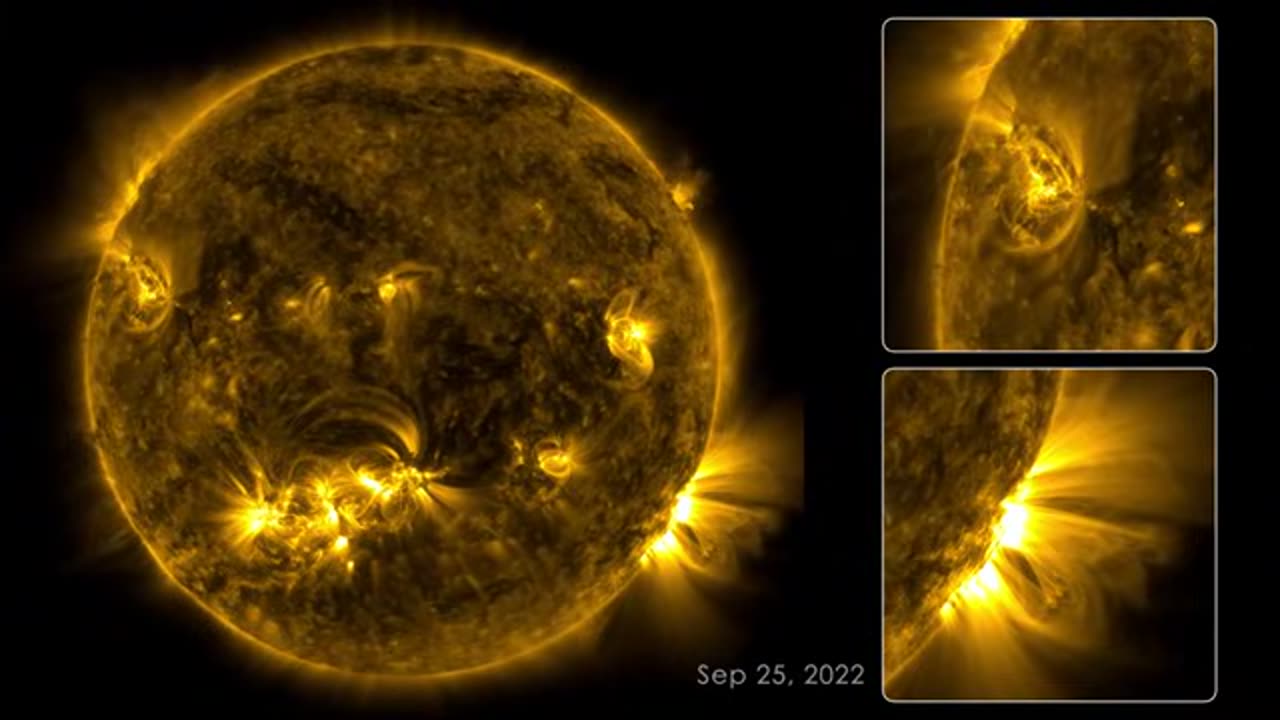Premium Only Content

133 Days on the Sun !!
133 Days on the Sun !!
chronicles solar activity from Aug. 12 to Dec. 22, 2022, as captured by NASA’s Solar Dynamics Observatory (SDO). From its orbit in space around Earth, SDO has steadily imaged the Sun in 4K x 4K resolution for nearly 13 years. This information has enabled countless new discoveries about the workings of our closest star and how it influences the solar system. With a triad of instruments, SDO captures an image of the Sun every 0.75 seconds. The Atmospheric Imaging Assembly (AIA) instrument alone captures images every 12 seconds at 10 different wavelengths of light. This 133-day time lapse showcases photos taken at a wavelength of 17.1 nanometers, which is an extreme-ultraviolet wavelength that shows the Sun’s outermost atmospheric layer: the corona. Compiling images taken 108 seconds apart, the movie condenses 133 days, or about four months, of solar observations into 59 minutes. The video shows bright active regions passing across the face of the Sun as it rotates. The Sun rotates approximately once every 27 days. The loops extending above the bright regions are magnetic fields that have trapped hot, glowing plasma. These bright regions are also the source of solar flares, which appear as bright flashes as magnetic fields snap together in a process called magnetic reconnection. While SDO has kept an unblinking eye pointed toward the Sun, there have been a few moments it missed. Some of the dark frames in the video are caused by Earth or the Moon eclipsing SDO as they pass between the spacecraft and the Sun. Other blackouts are caused by instrumentation being down or data errors. SDO transmits 1.4 terabytes of data to the ground every day.
On the left side of the frame is the full circle of the Sun. It appears in a golden yellow color, but splotchy and with thin yellow wisps extending from the surface. Some areas are very bright and others almost black. The whole Sun rotates steadily, with one full rotation taking 12 minutes in this time lapse. There are usually only a few bright regions visible at a time and they shift and flash like small fires. From these regions there are wispy loops reaching up above the surface that rapidly change shape and size. On the right side of the frame are two white-outlined squares with enlargements of interesting regions of the Sun.
NASA’s Goddard Space Flight Center · Instagram http://www.instagram.com/nasagoddard · Twitter http://twitter.com/NASAGoddard · Twitter http://twitter.com/NASAGoddardPix · Facebook: http://www.facebook.com/NASAGoddard · Flickr http://www.flickr.com/photos/gsfc
-
 11:03
11:03
Melonie Mac
10 hours agoClair Obscure Expedition 33 Has Saved Gaming
1.44K8 -
 7:39
7:39
The Shannon Joy Show
11 hours ago🇺🇸 America's Breaking Point: Are We Ready to Toss the Board? 🎯
596 -
 10:00
10:00
Adam Does Movies
15 hours agoCEO Claims Netflix Saved Hollywood. Um, WHAT?!?! - Rant
138 -
 1:00:43
1:00:43
Trumpet Daily
16 hours ago $3.66 earnedThat Big, Beautiful Wall Around the Vatican - Trumpet Daily | Apr. 28, 2025
2.41K12 -
 12:40
12:40
Degenerate Jay
9 hours agoThe Perfect RoboCop Versus Terminator Game Needs To Be Made!
1182 -
 8:17
8:17
VSOGunChannel
13 hours ago $0.07 earnedYou Were Put on a Government Watch List || DECLASSIFIED
1792 -
 35:14
35:14
Steph & Kayls
14 hours agoSpicing Things Up: How To Navigate Adding A Third To The Bedroom | Ep. 4
11 -
 28:59
28:59
Film Threat
10 hours agoTHUNDERBOLTS* EARLY REACTIONS | Film Threat After Dark
7.97K3 -
 8:02:12
8:02:12
Rebel News
4 days ago $208.12 earnedELECTION NIGHT LIVE: Rebel News Canada coverage with Ezra Levant, Sheila Gunn Reid & Special Guests
411K227 -
 1:24:54
1:24:54
Badlands Media
13 hours agoBaseless Conspiracies Ep. 130: Iberia Blackout, Green Energy Failures, and Grave-Robbing Government Experiments
74.7K28